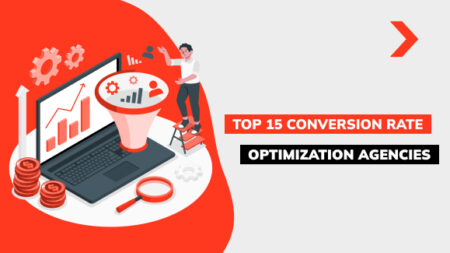Ecommerce SEO Audit
Any e-commerce company’s principal goal is to increase visitors. How can you attract clients to your online store without paying substantially in marketing and advertising? The solution is to learn how to apply eCommerce SEO.

SEO for eCommerce websites is the process of optimizing your website to follow search engine best practices and updating your content to reflect what your customers want. With this SEO checklist, you’ll be in a great position to rank and benefit from SEO. This lesson teaches the essentials of ecommerce SEO, including how to conduct keyword research, organize your website, and generate content for product pages.
What is Ecommerce SEO?
Ecommerce SEO is the activity of increasing an online store’s visibility on search engine results pages (SERPs). SEO marketing for e-commerce entails several responsibilities. Other e-commerce SEO chores include writing detailed product descriptions, collecting links from credible websites, and optimizing page load times.
Even websites in positions three to five receive substantially less traffic than the top results, and those beyond the top 10 are rarely accessed. Furthermore, it showed that 27.6% of all clicks on a Google SERP go to the top result. To put it another way, SEO is crucial. As a result, the goal is to appear as high as possible on the first page of search engines like Google, Bing, and Yahoo for queries relating to your e-commerce specialization.
Why You Should Audit Your Ecommerce Website
An eCommerce website audit can help identify any portions of a website that need to be updated, such as obsolete information, broken links, or outdated design elements. An e-commerce site audit can also detect potential security issues, such as coding errors or outdated security protocols.
A website audit can also identify technical issues that are reducing loading times or making users angry. Updates made by siloed teams to a brand’s product pages or eCommerce business’s website may provide unexpected friction spots, leading to cart abandonment. When friction is identified and eliminated, conversions increase.
The Role of SEO in Ecommerce Growth
Overall, ecommerce SEO is critical for building brand trust and credibility, lowering costs, improving user experience, increasing conversion rates, gaining a competitive advantage, providing insights into consumer behavior, and driving organic traffic. Furthermore, organic traffic consistently converts better than paid traffic, raising CPAs.
Impact on Traffic, Sales, and Visibility
A well-optimized website is more likely to increase ranking on search engine results pages. This increased visibility may result in a significant increase in visitors to your eCommerce site. Customers are more likely to purchase from you when more people visit your website and learn about your brand. SEO can improve the visibility of your product pages, resulting in increased sales.
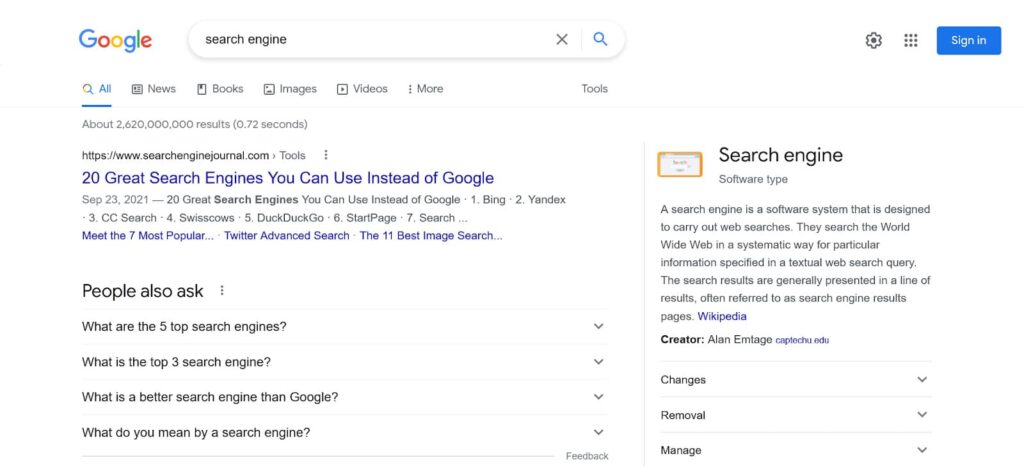
Support for Long-Term Strategy
Ecommerce SEO is generally less expensive than other digital marketing tactics. Although SEO requires a time and resource investment, the long-term benefits may outweigh the cost. Spending money on SEO can help your e-commerce company beat its competitors. Ranking higher in search engine results pages provides two benefits: it strengthens your brand and attracts more potential clients.
Benefits of Conducting an Ecommerce SEO Audit
An audit is a comprehensive review of an eCommerce business’s operations. Its objective evaluation of performance seeks to help your firm reach its full potential. Auditing demands dedication. Data collection and analysis require time and effort. The next stage is to make recommendations based on that. However, when it comes time to put everything into action, the actual work begins.
Identify Technical and Content Issues
Finding and resolving technical problems impeding your website’s functionality is one of the most important advantages of performing an e-commerce SEO audit. Duplicate content, sluggish website loads, broken links, and mobile responsiveness are a few examples. You can enhance user experience and raise your search engine ranking by resolving these problems.
Improve User Experience and Conversion Rates
Technical SEO may show you how easy it is to use your website and provide you suggestions on how to make it as simple as possible to browse, choose, and buy items. Conversion is more important than traffic. An audit for eCommerce SEO can significantly boost the possibility of visitors becoming customers by identifying and enhancing high-converting pages, as well as addressing those with high bounce rates.
Discover Keyword Opportunities
Prioritize queries with the highest search traffic by doing keyword research to see how your target audience searches for your products or services. Then, using a keyword targeting map, match the potential keywords to current and upcoming pages based on search intent. Your content strategy will then be developed around developing search engine rankings.
Analyze Competitor Strategies
An SEO audit can help you analyze your competition while also serving as an internal evaluation procedure. Gaining insight into how your competitors perform in search results may help you enhance your SEO strategies and keep your lead. Conducting an audit allows you to respond to the audience’s search habits and understand what types of content generate interaction.
Gain Insights into Site Performance
A website’s technical SEO audit makes precise recommendations for improving image enhancement, allowing the website owner to select priorities and make major changes. Although the principles of SEO remain the same, the search environment is always evolving as new features are added and ranking algorithms become obsolete.
How to Perform an Ecommerce SEO Audit Step-by-Step
Do you want to make sure that you do the most thorough audit possible? Conducting a comprehensive eCommerce SEO requires a rigorous strategy that includes every aspect of your website that influences search performance.

If you are new to SEO and want to improve your store’s Google ranking, consider the following methods. They provide practical checklists for implementing logical, essential e-commerce SEO on your site.
Preparing
You must prepare the audit before proceeding. This includes determining what you will examine, who will conduct the auditing (internal team or outside specialists), and how long it will take. To keep the process fast and well organized, start by going over any prior audits, backing up the website, and creating a timeline with milestones.
Set Objectives and KPIs
Begin by identifying objectives that will improve your visitors’ experience. These goals may begin as SEO performance targets, such as increasing site traffic and dwell time. To ensure that your audit is goal-driven and quantifiable, set specific targets and KPIs that complement your eCommerce business’s SEO objectives.
Choose an SEO Tool or Platform
Online shops can use SEO tools and platforms to discover and resolve website issues. Google Search Console is a free tool that shows you how well your website performs in searches. You can see how frequently your pages appear in search results and which keywords bring customers to your store. It also warns you of errors on your website that could reduce your rankings.
Technical SEO Audit
One of the main components of an e-commerce SEO plan is a site’s technical health. The site must be crawlable and indexable by search engines, which are prerequisites for organic search performance and are frequently not satisfied if not routinely checked. Additionally, websites’ mobile friendliness and speed are evaluated in a technical SEO audit.
Crawlability and Indexing
A helpful overview of indexability may be found in Google Search Console’s Coverage tab. The list of URLs that Google has crawled is displayed on the dashboard along with their status — valid, excluded, or erroring. Control how search engine bots navigate your eCommerce website to preserve crawl efficiency and prevent content cannibalization.
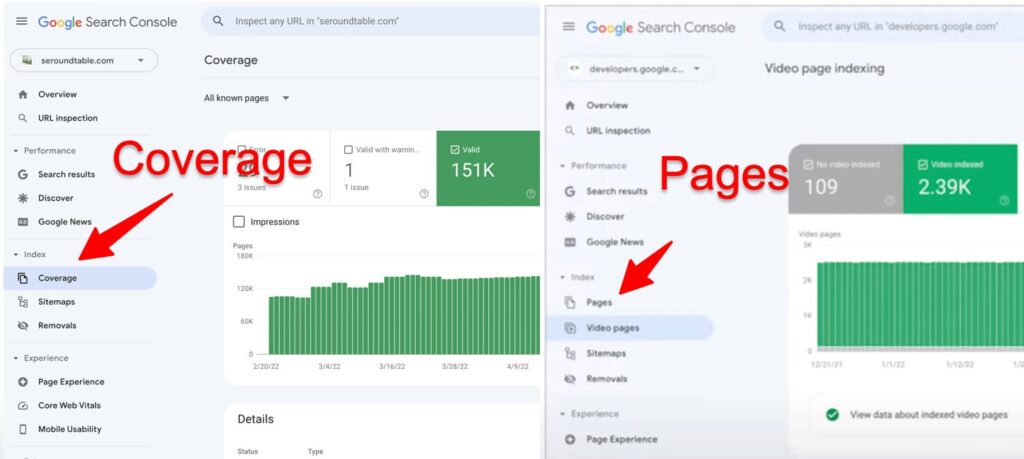
Site Speed and Mobile-Friendliness
Because Google’s algorithm considers a site’s loading time when going up, various page load time auditing tools are available, including PageSpeed Insights. Google’s ranking system includes mobile-first indexing, which measures a website’s mobile friendliness. Therefore, it is critical to deliver an outstanding mobile experience. Google’s Mobile-Friendly Test can be used to determine this.
Site Structure and Navigation
Schema markup improves search engines’ understanding of the page’s purpose and can even help your page rank higher on Google. One of the best schema types to use is the product schema, which provides additional information about your products’ availability, cost, and customer reviews. Visitors and search engine bots must be able to effortlessly navigate your store’s content because of the site’s layout.
On-Page SEO Audit
Making sure each page of your website is appropriately optimized for both users and search engines should be your top concern after technical obstacles have been removed. How highly your content ranks, how appealing your listings appear in search results, and how user-friendly your website is are all impacted by on-page SEO and its techniques.
Product and Category Pages
Avoid short pages with a few lines of generic text and redundant content, particularly manufacturer-provided descriptions.

Each page should include a detailed explanation of the product’s qualities, advantages, specifications, and applications. Users should be directed to category pages that provide short yet instructional information about the various products available.
Content Audit
Content is one of the most effective ways to increase organic traffic and authority. Without frequent audits, even large eCommerce sites risk falling behind — missing out on critical search engine optimization opportunities, allowing duplicate material to impair results, or failing to fully understand user intent. Begin by identifying where your competitors are succeeding and where you can catch up or outperform them.
Internal Linking
Check your internal connectivity plan as well. Strong internal links bring users to relevant pages and help spread authority throughout your online store.
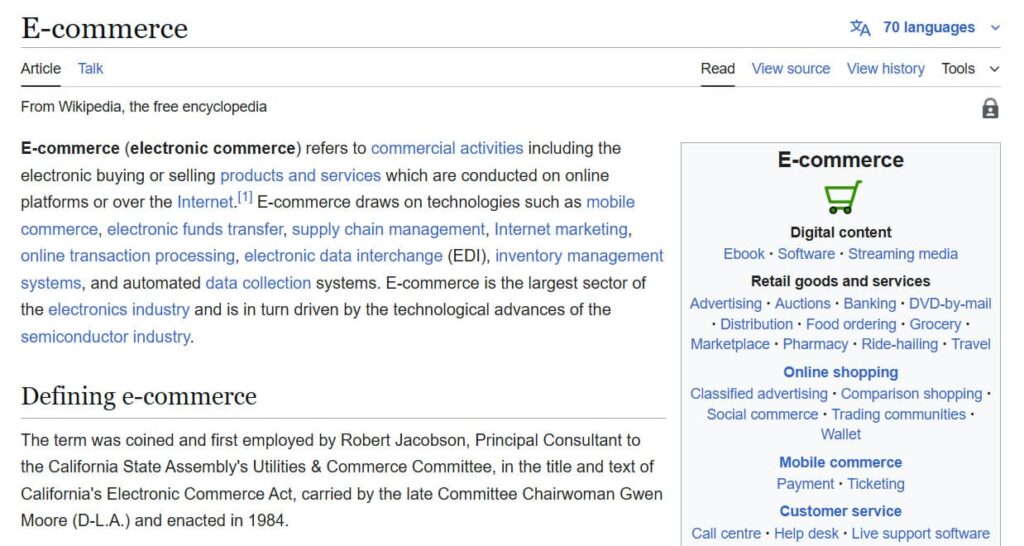
Use descriptive anchor text to boost usability and SEO (such as “Shop Winter Jackets” instead of “Click here”). External links to your web pages are excellent, but internal links are just as useful.

Keyword Optimization
Start by analyzing the keywords that your landing pages, product, and category are targeting. A distinct, targeted term that aligns with search intent should be the main focus of each page. Rather than using general terms like “jackets,” try using more specific, purchase-oriented phrases like “women’s waterproof hiking jackets.” Greater-quality traffic, or visitors with a greater conversion rate, is brought about by specificity.
Title Tags and Meta Descriptions
Title tags and meta descriptions have a significant impact on both SEO and clickthrough rates. Your major keyword should appear in the title tag of each page, preferably toward the top.
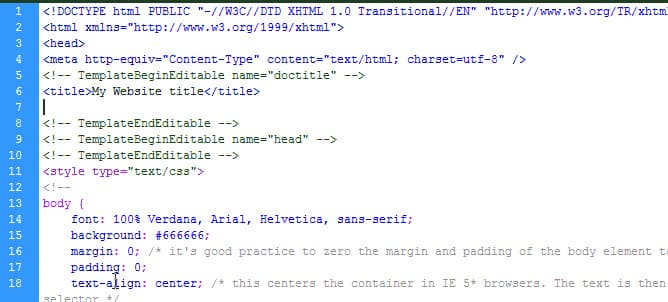
When possible, meta descriptions should include a strong call to action that is both fascinating and appropriately represents the website.
Header Tags (H1-H6)
Examine your header structure as well as the information. Each page should contain a single H1 (typically the name of the product or category), followed by logically nested H2s and H3s. This hierarchy helps both users and search engines understand the organization and significance of your material.
Image Optimization
Image optimization is critical for e-commerce websites, but it is often overlooked. Each product and category image should have a meaningful alt tag to ensure SEO and WCAG accessibility compliance. The alt text should naturally include relevant keywords to provide a brief explanation of the image’s contents.
Schema Markup
Lastly, confirm that structured data (schema markup) has been added to your pages.

Product schema increases click-through rates by enabling your listings to include rich snippets, such as price, availability, and ratings, immediately in search results.
Focus on adding structured data for:
- Product pages containing availability, pricing, and product details.
- Reviews (total score)
- Breadcrumbs (to improve the visibility of the site hierarchy).
Two scenarios make e-commerce product schema useful. The first occurs when your website’s product page has only information about one product. The second scenario includes the use of a shopping aggregator.
Off-Page SEO Audit
An off-page SEO, especially backlinks, bolsters your authority and competitive standing, while technical and on-page SEO fortify your base. Going through the checklist, competing for competitive terms is practically difficult without a strong external link profile.
Backlink Profile Review
Audit your backlink profile for toxicity, variety, and quality. Seek out respectable domains that link to your site; relevance is more important than quantity. Numerous backlinks from low-quality sources are far less important than a few high-quality backlinks from credible domains. To prevent these penalties, collect any faulty backlinks and submit a disavow file through Google Search Console.
Brand Mentions and Social Signals
Analyze the degree of social media platform integration with your e-commerce store. Having social sharing options on product pages can help enhance visibility, and social signals and brand mentions can affect SEO. To give your customers a seamless experience, make sure your website and social media outlets are consistently branded.
Local SEO Presence
Examine local SEO aspects such as your Google Business Profile and local citations (online references to your location, phone number, and so on) if your company has physical locations. Allow mapping apps like Google Maps and Apple Maps to display your actual location.
Competitor Backlink Analysis
Next, compare your off-page strategy to those of your main rivals. Examine the areas where your rivals are obtaining links to see trends or chances that you may take advantage of. For instance, look into how you might engage with similar outlets through PR campaigns, partnerships, or contributed content if your competitors often receive backlinks from fitness magazines, industry blogs, or supplier partnerships.
User Experience and Conversion Optimization
Consider site search capabilities, load time, mobile responsiveness, and ease of navigation when assessing the overall user experience (UX). Think about how successfully your website is designed to turn visitors into buyers, paying particular attention to features like product pages, calls to action, and the checkout process. Conversion rate optimization involves keyword targeting.
Mobile Usability and Design
Test every aspect of your client experience on mobile devices, from exploring the webpage to finishing the checkout process. Look for design issues, including cluttered buttons, difficult-to-click menus, and slow mobile pages. Ensure that pop-ups, form fields, and payment mechanisms work properly on mobile devices. Because of Google’s mobile-first indexing, a poor mobile experience not only degrades SEO but also results in quick drop-offs during critical purchasing moments.

Navigation and Checkout Flow
Begin by examining how easy it is for visitors to navigate your website. Examine how your menu is displayed and whether clients can simply find what they are looking for. Ensure that your search bar works properly and offers appropriate results. Ensure that the content and graphics on your product pages are clear. Additionally, you should remove any barriers that may exist between the first landing page and the final stage of the online checkout process.
SEO Audit Tools and Resources
Most of us have to think about our budgets. The good news is that a lot of free platforms are capable of doing the job. They could have certain restrictions, like a monthly query limit or a constraint on the number of pages they crawl, but they can be very helpful for rapid insights or smaller projects.
Check for SEO problems, monitor backlinks, research competitors, and use Ahrefs to remove harmful links. Use Semrush’s Thematic Reports to prioritize corrections, automate site audits, and monitor more than 100 SEO issues. Keep an eye on indexing, clicks, and Core Web Vitals; use Google Search Console to troubleshoot visibility concerns. Use PageSpeed Insights to test page speed and receive edit advice on things like lazy loading and image compression. Lastly, use Screaming Frog to crawl the website and look for improper redirects, duplicate tags, broken links, and missing alt text.
Next Steps
Once your site audit is complete, follow these steps to act on your findings right away. Provide a summary of the audit’s findings and action plan if you’re a member of a bigger group or organization. Give monthly or quarterly updates on whether conversions increased or bounce rates decreased. Continued support for regular SEO upkeep is fostered by transparent reporting.
Prioritize Fixes and Implement Changes
We aim to ensure that technical audits are more than just long lists that cover every part of the website and provide little return on investment. Technical SEO improvements (such as improved internal linking, page speed fixes, or title tags) should be prioritized if the content has a large search volume opportunity, even if the page isn’t doing well on Google.
Focus on High-Impact Areas First
Keep detailed records of all changes you make, including how they affect key metrics such as organic traffic and conversion rates. These documents will provide valuable information for further changes and aid in justifying future SEO expenditures. Plan a complete annual audit to ensure your website’s technical health, and schedule quarterly mini-audits to detect new issues early. Use automatic monitoring solutions to stay on top of any major SEO issues.
Work with Developers and Content Teams
Since everyone is busy, it can be simple to employ a technical SEO supplier, give them a quick rundown of your goals, and then expect them to come back with a list of actions that generally align with your business objectives. Because of this, it’s essential to onboard the appropriate agency team members at the beginning, along with all pertinent stakeholders from your end.
Build an Ongoing Ecommerce SEO Strategy
A great ecommerce SEO strategy improves your store’s rating in search engine results, increasing its visibility to potential customers. You can attract the right customers to your store and increase conversion rates by focusing on specific keywords and phrases. You obtain a competitive advantage in the market by setting yourself apart from your competitors with a strong SEO strategy.
Schedule Regular SEO Audits
You must regularly verify the results. Every week, look for fresh crawl flaws and CTRs. Every month, we examine user behavior, traffic patterns, and post-audit fixes. Every three months, you should conduct a new crawl with Screaming Frog, but keep in mind that comprehensive crawls are time-consuming. Review your most important pages regularly. Additionally, analyze your competitors’ success and update outdated sites in light of new prospects.
Align SEO with Business Goals
Achieve your business goals by defining and comprehending them. You may achieve your business goals with a great content marketing approach. Using real-world examples, learn how to create content that aligns with your business objective. Business objectives and content are two sides of the same coin. Your business can accomplish its intended goals by aligning the two.
FAQs
What does an ecommerce SEO audit include?
In a nutshell, an ecommerce SEO audit is a procedure that assesses every element of a website that affects how well it performs in featured results and finds areas for development. Within your checklist, analyzing on-page components, content, website speed, backlink profile, and technical SEO problems are all part of this process.
How often should I perform an SEO audit?
To find problems that automated technologies are unable to detect, we advise conducting a thorough audit at least once every three months. The majority of websites do audits on a regular and quarterly basis. They plan manual, in-depth audits every three months and use automated on-page SEO audit tools for monthly automated audits.
What is the best SEO audit tool for ecommerce?
Google Trends, Moz Keyword Explorer, and Google Keyword Planner are excellent tools for small businesses. Free and easy to use, Google Keyword Planner and Google Trends offer comprehensive keyword analysis as well as trend and popularity tracking.
Can I audit my eCommerce site without a developer?
Yes, you can audit your eCommerce website without a developer by focusing on key factors like navigation, content clarity, mobile compatibility, site speed, and overall user experience. You may identify many problems on your own by assessing how easy it is for visitors to find products, complete purchases, and navigate your website. While assistance may be required for a technical SEO audit; a basic one can be conducted without coding experience.
How long does a full e-commerce website audit take?
Depending on the size of your website and the audit, a comprehensive audit can take anywhere from 30 minutes to six weeks. Off-page SEO, sitemaps, backlinks, duplicate content, keyword cannibalization, site architecture, crawling and indexing concerns, compliance technical issues, and the opportunity to do a competitor study are all covered in an audit.


